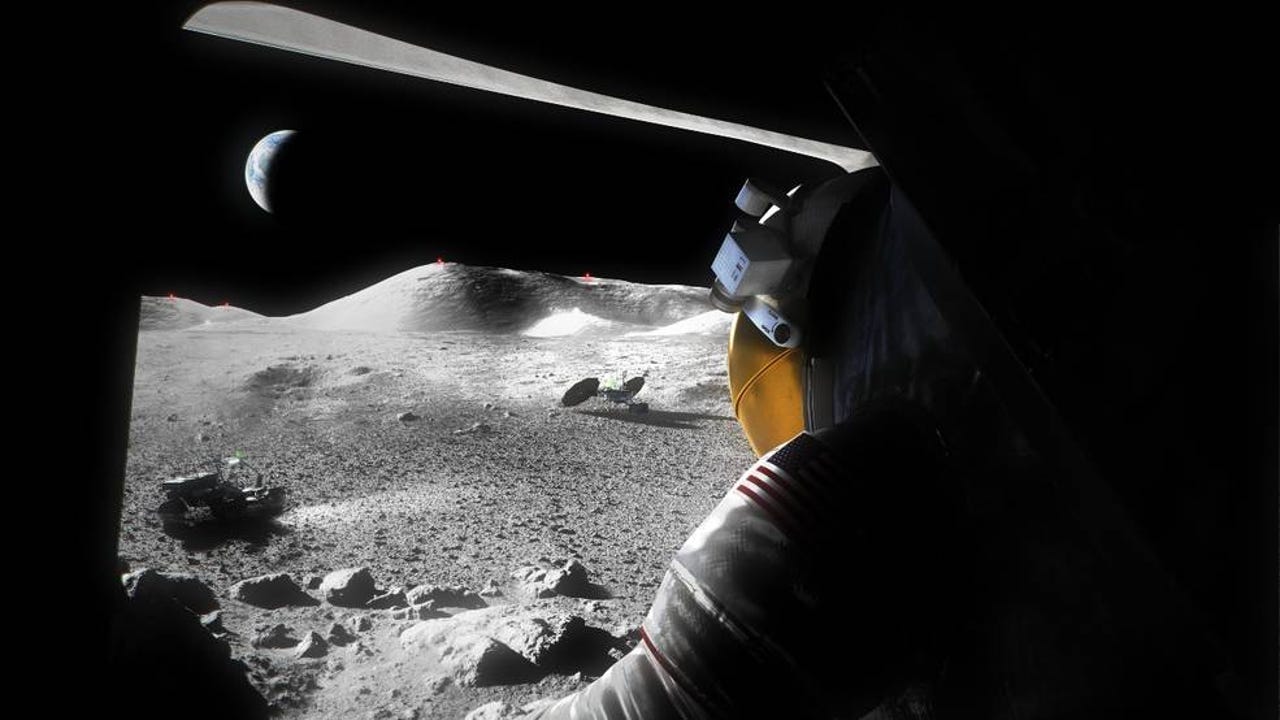
































This is what an Artemis astronaut might see when their lander arrives on the lunar surface.
Image: NASANASA wants other firms beyond Elon Musk's SpaceX to pitch for a new Moon lander vehicle for its Artemis project, which aims to put humans on the lunar surface again for the first time since Apollo 17 in 1972.
Artemis is NASA's ongoing attempt to revive the idea of humans physically going to the Moon. The goals are for "scientific discovery, economic benefits, and inspiration for a new generation of explorers."
The US space agency plans to spend about$100 billion on the Artemis project. Earlier this month, it brought the massive Orion spacecraft to the Kennedy Space Center launch pad in preparation for take off.
SEE:Employers are desperate for data scientists as demand booms
Artemis is named after Apollo's twin sister. The project helps NASA establish long-term exploration of the Moon as a precursor to human missions to Mars. The Orion is a beast, measuring 322-feet in length with a weight of 3.5 million pounds.
NASA is now taking a new tack by contracting out lander manufacturing to all private sector firms rather than making it in-house or relying solely on Elon Musk's SpaceX.
"Under this new approach, NASA is asking American companies to propose lander concepts capable of ferrying astronauts between lunar orbit and the lunar surface for missions beyond Artemis III, which will land the first astronauts on the Moon in more than 50 years," NASA said in a statement.
It wants the new landers to be able to dock to a lunar orbiting space station called Gateway, an outpost vehicle orbiting the Moon, to increase crew capacity, and transport more science and technology to the moon's surface.
"Under Artemis, NASA will carry out a series of groundbreaking missions on and around the Moon to prepare for the next giant leap for humanity: a crewed mission to Mars," said NASA Administrator Bill Nelson.
"Competition is critical to our success on the lunar surface and beyond, ensuring we have the capability to carry out a cadence of missions over the next decade."
NASA already has a$2.9 billion contract with SpaceX to build the lunar launcher but says the job is now open to "all other U.S. companies to provide a new landing demonstration mission from lunar orbit to the surface of the Moon."
ZDNet sister site CNET reports that Amazon founder Jeff Bezos' space travel firm Blue Origin will bid for a slice of the moon lander project.
"Blue Origin is thrilled that NASA is creating competition by procuring a second human lunar landing system," a Blue Origin spokesperson told CNET.
"Blue Origin is ready to compete and remains deeply committed to the success of Artemis. We will continue to work with NASA to achieve the United States' goal to return to the moon as soon as possible."
 Tags quentes :
Inovação
Espaço
Tags quentes :
Inovação
Espaço